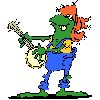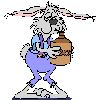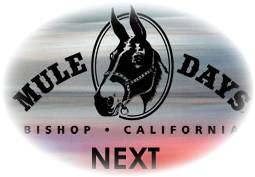
2007 MULE DAYS RALLY
PAGE 3
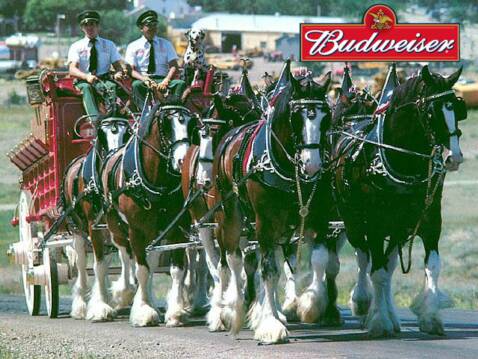
The Budweiser Clydesdales
Gentle giants. To see such power encased behind such a gentle demeanor, to see these huge animals exhibit the self-control it takes to make the maneuvers they do, that must be part of what makes them so attractive. You know they must have a lot of self-control because no one could force them to do what they didn’t want to.
Clydesdales are descended from the great war horses of Europe. In the Clyde Valley in Lanarkshire, Scotland local mares were crossed with the heavier Flemish stallions first imported in the early eighteenth century. They were bred for the strength and power to pull heavy plows and wagons with ease. They also are described as having ‘very active paces’ or high leg action. Bays and browns are the most common colors but grays and blacks are also found.

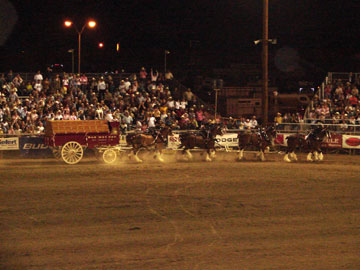
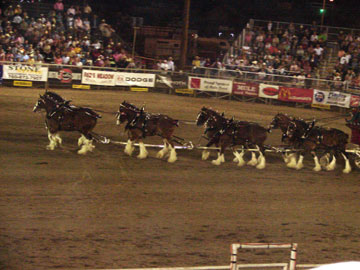

To make the Budweiser team each Clydesdale must be a gelding at least four years old, standing 72 inches (or six feet) at the withers when fully mature, and weigh 1800 to 2300 pounds. They must also be bay in color with four white stockings, a blaze, and a black mane and tail. The names are kept short so that the driver can easily give commands while driving the team. The average horse will be on the team for 20 to 23 years. After that he might be transferred to lighter duty at one of the Seaworld locations or used to help train the younger horses.
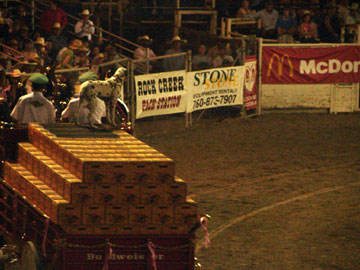

The Equipment
The set of eight harnesses per hitch are valued at $82,000 each. Collars are custom fit to each horse. Trimmed in silver and brass each harness weighs 130 pounds. There is a man in Barrington Massachusetts that has been making harness since 1931. He has made all of the Budweiser harnesses and is currently working on his last set before retiring.
Turn-of-the-century wagons have been meticulously restored and kept in excellent condition.
The wagon weighs almost four tons.
Every detail of the equipment is taken into consideration, including the weight of the halters. Bio-plastic halters are used to optimize the comfort of the horses.
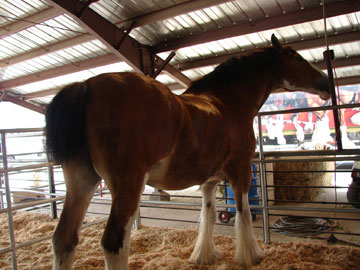
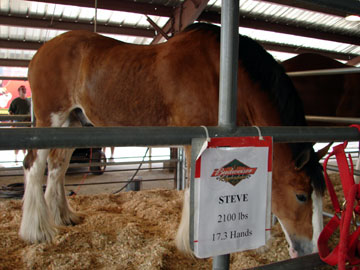
Divided into two meals a day each horse can consume as much as 20 to 25 quarts of feed, 50 to 60 pounds of hay and up to 30 gallons of water. The feed is a mixture of beet pulp, crimped oats, bran, minerals, salt and molasses
Portable stalls are used while traveling. The traditional tie-stall used for work-horses has been modified to meet the needs of keeping the Clydesdales comfortable while allowing the public to view them at a safe distance. Safe, that is, for the horses.

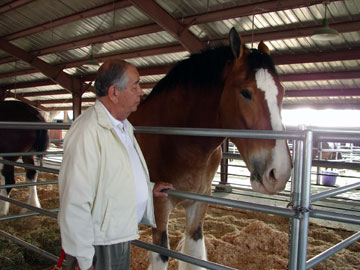
HMC Club Members admiring the Clydesdales...
Left: Doris & Tom Enos Right: Don Pankhard .
Is that so ! Tell me more...
Next... HMC Club Members enjoying Happy Hour
Visitors
This page was last updated: September 25, 2007

